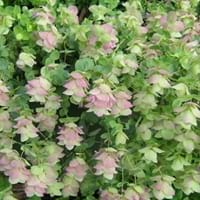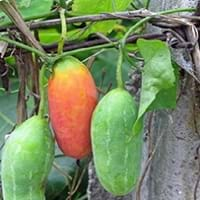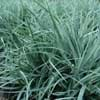Life Span
Perennial
Annual
Origin
Hybrid origin
India, Philippines, Southeast Asia
Types
Kent Beauty
Amethyst Falls
Barbara Tingey
Not Available
Number of Varieties
Not Available
Habitat
Grassland, Open scrub, Rocky areas
Loamy soils, Moist Soils, Subtropical climates
USDA Hardiness Zone
5-8
5-7
Sunset Zone
Not Available
A1, A2, A3, H1, H2, 1a, 1b, 2a, 2b, 3a, 3b, 4, 5, 6, 7, 8, 9, 10, 11, 12, 13, 14, 15, 16, 17, 18, 19, 20, 21, 22, 23, 24
Habit
Clump-Forming
Vining/Climbing
Minimum Height
Not Available
Minimum Width
Not Available
Flower Color
Pink
Yellow, Orange, Dark Green
Flower Color Modifier
Bicolor
Bicolor
Fruit Color
Not Available
Yellow, Dark Green
Leaf Color in Spring
Dark Green
Green, Dark Green
Leaf Color in Summer
Dark Green
Green, Dark Green
Leaf Color in Fall
Dark Green
Green, Dark Green
Leaf Color in Winter
Light Green
Not Available
Plant Season
Summer, Fall
Summer, Fall
Sunlight
Full Sun
Full Sun
Growth Rate
Slow
Very Fast
Type of Soil
Loam
Loam, Sand
The pH of Soil
Neutral, Alkaline
Neutral
Soil Drainage
Well drained
Well drained
Bloom Time
Late Summer, Early Fall
Indeterminate
Tolerances
Drought
Drought
Where to Plant?
Container, Ground, Pot
Ground
How to Plant?
Seedlings
Seedlings
Plant Maintenance
Medium
Medium
Watering Requirements
Allow soil to be completely dry in between waterings, Does not require lot of watering, Water twice a day in the initial period, Water when soil is dry
Requires regular watering, Water daily during growing season
In Summer
Lots of watering
Lots of watering
In Spring
Moderate
Moderate
In Winter
Average Water
Average Water
Soil pH
Neutral, Alkaline
Neutral
Soil Type
Loam
Loam, Sand
Soil Drainage Capacity
Well drained
Well drained
Sun Exposure
Full Sun
Full Sun
Pruning
Remove damaged leaves, Remove dead branches, Remove dead leaves
Cut out old flower stalks, Prune after flowering, Remove crossing or rubbing branches, Remove dead or diseased plant parts
Fertilizers
All-Purpose Liquid Fertilizer
Apply 10-10-10 amount, Apply 12-12-12 amounts, Phosphate
Pests and Diseases
Red blotch
Aphids, Army-worms, Bacteria wilt, Bacterial leaf spot, Blight, Cucumber beetles, Cutworms, Fusarium leaf spot, Red spider mite
Plant Tolerance
Drought
Drought, Full Sun, Salt and Soil Compaction
Flower Petal Number
Single
Single
Fragrant Leaf
Not Available
No
Foliage Texture
Fine
Coarse
Foliage Sheen
Matte
Matte
Attracts
Butterflies
Bees, Flies, Flying insects
Allergy
Not Available
Hypoglycaemic Coma, Irregular Heart Rhythm, Miscarriage
Aesthetic Uses
Showy Purposes
Not Used For Aesthetic Purpose
Beauty Benefits
Not Available
Anti-ageing, For treating wrinkles, Nourishes scalp, Remove blemishes
Environmental Uses
Air purification
Food for animals
Medicinal Uses
Bloating, Bronchitis, Cough, Cramps, Croup, Gastrointestinal disorders, Headache, Rheumatoid arthritis, Urinary tract problems
Anti-fungal, Diabetes, Fever, Gastrointestinal disorders, Jaundice, Leprosy, Scabies, Weight loss
Part of Plant Used
Leaves
Fruits
Other Uses
Employed in herbal medicine, Used As Food
Cosmetics, Repellent, Use in Chinese herbology
Used As Indoor Plant
Yes
No
Used As Outdoor Plant
Yes
Yes
Garden Design
Container, Edging, Groundcover, Mixed Border
Dried Flower/Everlasting, Vine
Botanical Name
ORIGANUM 'Rose Dome'
Coccinia grandis
Common Name
Ornamental Oregano
baby watermelon, little gourd, tindora, tendli
In Hindi
सजावटी अजवायन
तेंडली, कुंदुरी
In German
Ornamental Oregano
Tindola,
Efeu Kürbis
In French
ornement origan
Ivy gourd
In Spanish
Ornamentales orégano
Ivy gourd
In Greek
καλλωπιστικά Ρίγανη
Ivy gourd
In Portuguese
ornamental Oregano
Ivy gourd
In Polish
ozdobne Oregano
Ivy gourd
In Latin
decentius Oregano
Ivy gourd
Phylum
Not Available
Magnoliophyta
Class
Magnoliopsida
Magnoliopsida
Order
Not Available
Cucurbitales
Family
Lamiaceae
Cucurbitaceae
Clade
Angiosperms, Eudicots
Angiosperms, Eudicots, Rosids
Tribe
Mentheae
Not Available
Subfamily
Pitcairnioideae
Papilionoideae
Number of Species
Not Available
Importance of Ornamental Oregano and Ivy Gourd
Want to have the most appropriate plant for your garden? You might want to know the importance of Ornamental Oregano and Ivy Gourd. Basically, these two plants vary in many aspects. Compare Ornamental Oregano and Ivy Gourd as they differ in many characteristics such as their life, care, benefits, facts, etc. Every gardener must at least have the slightest clue about the plants he wants to plant in his garden. Compare their benefits, which differ in many ways like facts and uses. The medicinal use of Ornamental Oregano is Bloating, Bronchitis, Cough, Cramps, Croup, Gastrointestinal disorders, Headache, Rheumatoid arthritis and Urinary tract problems whereas of Ivy Gourd is Anti-fungal, Diabetes, Fever, Gastrointestinal disorders, Jaundice, Leprosy, Scabies and Weight loss. Ornamental Oregano has beauty benefits as follows: Not Available while Ivy Gourd has beauty benefits as follows: Not Available.
Compare Facts of Ornamental Oregano vs Ivy Gourd
How to choose the best garden plant for your garden depending upon its facts? Here garden plant comparison will help you to solve this query. Compare the facts of Ornamental Oregano vs Ivy Gourd and know which one to choose. As garden plants have benefits and other uses, allergy is also a major drawback of plants for some people. Allergic reactions of Ornamental Oregano are Not Available whereas of Ivy Gourd have Hypoglycaemic Coma, Irregular Heart Rhythm and Miscarriage respectively. Having a fruit bearing plant in your garden can be a plus point of your garden. Ornamental Oregano has no showy fruits and Ivy Gourd has showy fruits. Also Ornamental Oregano is flowering and Ivy Gourd is not flowering . You can compare Ornamental Oregano and Ivy Gourd facts and facts of other plants too.





